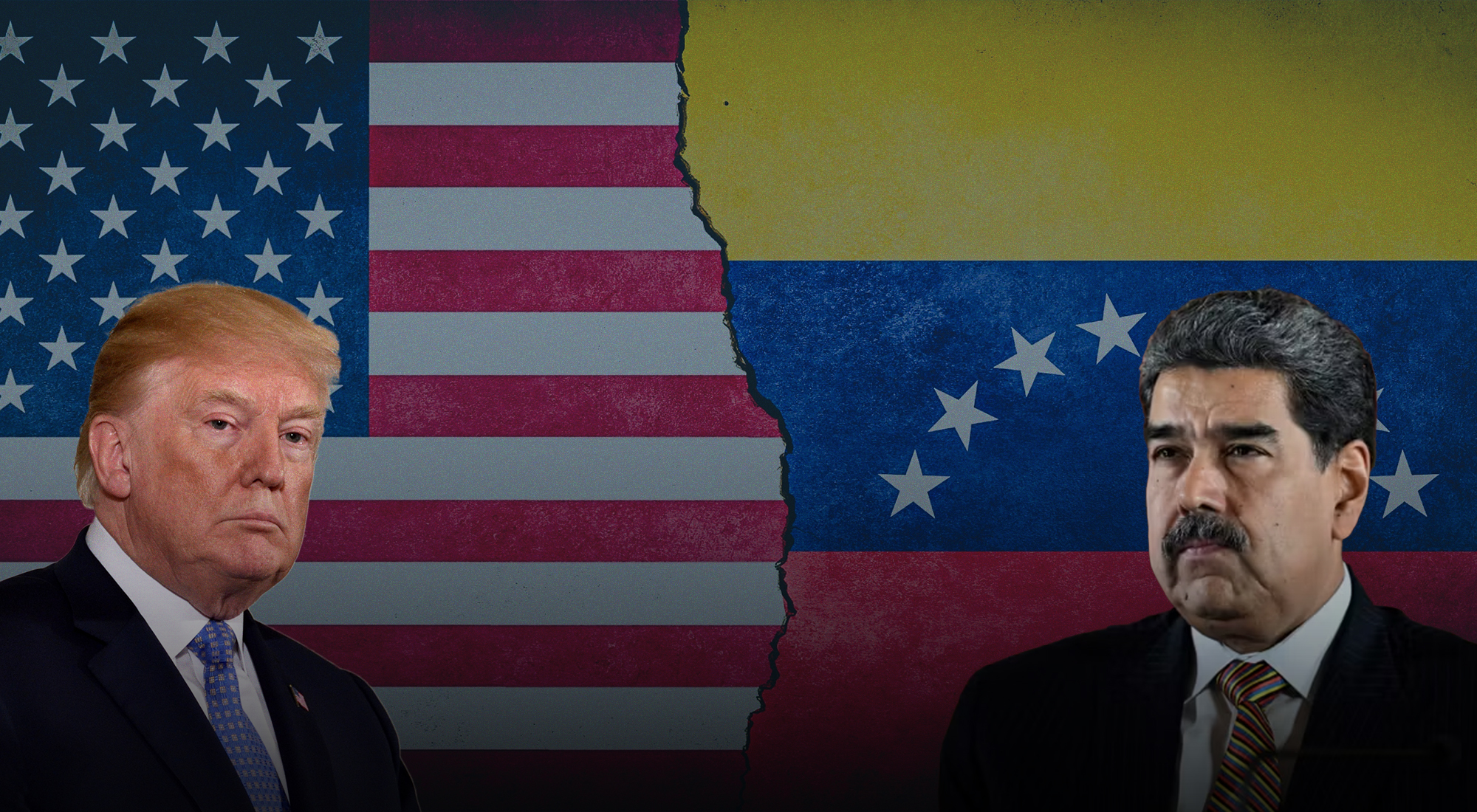Recently, the United Kingdom has witnessed a significant surge in anti-immigration protests, a trend that reflects deeper societal tensions and the pervasive influence of misinformation. These protests have not only grown in frequency but also in intensity, often erupting into violence that disrupts public order and exacerbates social divisions. The recent violent unrest that followed the tragic killing of three young girls, which was falsely attributed to a Muslim migrant, serves as a stark illustration of the dangerous consequences that can arise when false information is spread unchecked. Despite the police clarifying that the suspect was not a migrant, the damage had already been done. The misinformation had already fuelled widespread anger and provided a potent catalyst for existing anti-immigration sentiments to boil over into the streets.
This tragic incident is emblematic of a broader issue in contemporary British society, where misinformation can quickly take root and spread, particularly through digital platforms and social media. These platforms, while invaluable for communication and information sharing, have also become breeding grounds for false narratives and extremist ideologies. In this context, misinformation about immigrants has not only shaped public opinion but has also led to real-world consequences, including violence and social unrest. The case of the falsely attributed killing demonstrates how misinformation can create a fertile ground for fear and hatred to flourish, leading to swift and severe repercussions for immigrant communities who find themselves unfairly blamed and targeted.
The spread of such misinformation and the subsequent unrest highlight the deep-seated anxieties and fears that exist within certain segments of the British population. Economic challenges, cultural changes, and political uncertainty have all contributed to a sense of insecurity among many, which far-right groups have been quick to exploit. These groups often use misinformation as a tool to scapegoat immigrants, framing them as the cause of various social and economic woes. By doing so, they redirect public frustration away from the more complex, systemic issues that underlie these problems and towards a vulnerable and visible “other.” This process not only deepens societal divisions but also serves to further entrench the power and influence of these far-right movements.
The exploitation of economic and social issues by far-right groups to scapegoat immigrants is not a new phenomenon, but its effectiveness has been amplified in the digital age. Social media platforms allow for the rapid dissemination of misinformation, enabling far-right groups to reach and influence large audiences with minimal effort. These platforms also create echo chambers, where users are exposed primarily to information that reinforces their existing beliefs, further entrenching their views and making them more susceptible to extremist narratives. In this environment, disinformation about immigrants can quickly gain traction, leading to heightened tensions and, as seen in the recent protests, violent outcomes.
The implications of this trend are profound, both for immigrant communities and for the broader fabric of British society. Immigrant communities, particularly those from Muslim backgrounds, have been disproportionately affected by this wave of disinformation-driven unrest. Not only do they face increased hostility and discrimination, but they also must contend with the psychological toll of being vilified and blamed for societal problems. This environment of fear and suspicion makes it even more difficult for immigrants to integrate and thrive in their new communities, perpetuating a cycle of marginalization and alienation.
For British society as a whole, the rise of anti-immigration protests fuelled by misinformation poses a significant threat to social cohesion. As these protests become more frequent and more violent, the divisions within society are likely to deepen, making it more challenging to foster understanding and unity across different communities. Moreover, the reliance on misinformation to fuel these protests undermines the possibility of having informed and constructive discussions about the legitimate concerns and challenges that arise from immigration. Instead, the public discourse is dominated by fear, anger, and falsehoods, which only serve to further polarize the population and make it more difficult to address the root causes of social discontent.
The recent unrest in the UK, therefore, serves as a critical reminder of the need to address the spread of misinformation and its consequences. It underscores the importance of promoting media literacy and critical thinking skills, particularly in the digital age, where misinformation can spread rapidly and widely. It also highlights the need for more robust mechanisms to counteract the spread of false information, whether through fact-checking initiatives, stricter regulations on social media platforms, or more responsible journalism.
Furthermore, there is an urgent need to address the broader societal issues that misinformation exploits, such as economic inequality, job insecurity, and cultural anxieties. By tackling these underlying problems, it may be possible to reduce the appeal of the simplistic, scapegoating narratives promoted by far-right groups and build a more resilient and cohesive society. This is not just about countering the misinformation that drives anti-immigration protests; it is also about creating a society where such misinformation cannot take root and flourish in the first place.
The Role of Misinformation in Fuelling Anti-Immigration Protests in Britain
How did false information about the involvement of a Muslim migrant spread?
The spread of false information about the involvement of a Muslim migrant in various incidents is a multifaceted issue that leverages social media’s rapid dissemination capabilities. This issue is particularly complex due to the nature of social media platforms, which have the capacity to spread misinformation at an unprecedented scale and speed. The dynamics of social media amplify false narratives, as algorithms prioritize content based on engagement rather than accuracy, leading to the widespread diffusion of misleading or entirely false information. Not long ago, Andrew Tate, a controversial influencer, played a significant role in spreading the false narrative by publicly claiming that an attacker who left three children dead in Southport was an “illegal migrant.”[1] This claim was not only inflammatory but also deeply misleading, as it was based on no factual evidence and served to incite further division and hostility.
Tate’s influence and the way he used his platform to disseminate false information were instrumental in amplifying the narrative. His substantial following, which comprises millions of people across various social media platforms, provided a significant boost to the spread of this false narrative. Tate’s active engagement with and support for accounts that propagated similar misinformation created an echo chamber effect, where false claims were repeatedly validated and reinforced within certain online communities.[2] This phenomenon is not unique to Tate but is reflective of a broader pattern observed in the spread of misinformation, where influential figures contribute to the amplification of false claims through their large followings and platforms.
The impact of such misinformation was not confined to online spaces; it had real-world consequences that extended far beyond social media. One account, followed by over 360,000 users, perpetuated the misleading claim that the suspect was a “Muslim immigrant.”[3] This single tweet, which was part of a larger network of misinformation, garnered nearly four million impressions, illustrating the sheer scale and speed at which false narratives can propagate through social media channels.[4] The viral nature of the tweet meant that it was seen by a vast number of individuals, many of whom may have believed and shared the misinformation without verifying its accuracy.
The real-world consequences of this misinformation were significant, as the false claims fuelled social tensions and led to riots involving anti-immigration protesters.[5] These events underscored the dangerous potential of misinformation to incite social unrest and deepen societal divisions. The impact of such disinformation highlights the urgent need for effective strategies to combat the spread of false information. The police and credible news outlets, such as Sky News, later confirmed that the information about the suspect was untrue, thus emphasizing the stark contrast between verified facts and the fictional narratives that were spread through social media.[6] The rapid and widespread dissemination of false information demonstrates the critical need for robust fact-checking mechanisms and the promotion of media literacy among the public.
To address these challenges, it is essential to implement comprehensive fact-checking systems that can quickly and accurately identify and counteract false information. Additionally, fostering media literacy is crucial in empowering individuals to critically assess the information they encounter and to recognize and challenge disinformation effectively. By enhancing public awareness and understanding of these issues, we can mitigate the harmful effects of misinformation and contribute to a more informed and cohesive society.
What were the immediate social and economic impacts of this misinformation?
The immediate social and economic impacts of this misinformation were profound and multifaceted, revealing the extensive reach and influence of disinformation in modern society. Socially, the dissemination of false narratives significantly contributed to a noticeable and disturbing shift in public sentiment towards migrant communities. As these narratives took hold, they fostered an environment of distrust, fear, and hostility. This change in public perception was particularly striking as high-profile figures like Andrew Tate played a critical role in amplifying false claims and misleading information. Tate’s influential platform, combined with his spreading of inflammatory rhetoric, exacerbated negative stereotypes and xenophobic attitudes, further polarizing societal views on migrants.[7] The spread of such narratives served to deepen existing prejudices and promote divisive attitudes, thereby eroding social cohesion and solidarity among diverse communities.
Economically, the effects of disinformation were equally detrimental. One notable consequence was the ‘chilling effect’ observed among non-governmental organizations (NGOs) and humanitarian groups. These organizations, which are crucial in providing support and services to vulnerable migrant communities, found themselves in a precarious position. The fear of being associated with vilified groups in the media led many NGOs to hesitate or even withdraw their support, thereby diminishing the availability of essential resources and aid for those in need.[8] This reluctance to engage with or support marginalized communities not only exacerbated the hardships faced by these groups but also weakened the overall network of support designed to assist them during times of crisis.
The weaponization of disinformation by politicians further compounded these issues, as it was strategically employed to suppress dissent and manipulate public opinion. By leveraging false narratives and misleading information, politicians were able to shape and control public discourse, often with the aim of undermining democratic processes and perpetuating their own agendas.[9] This manipulation not only distorted the truth but also contributed to a climate of political polarization and reduced trust in democratic institutions.
Additionally, the spread of misinformation had severe and immediate repercussions in terms of direct violence against minorities. Individuals who were influenced by these false narratives engaged in hate crimes and discriminatory acts, further perpetuating cycles of violence and marginalization.[10] The impact of this violence was deeply damaging, both to the targeted individuals and to the broader communities affected by these acts of aggression.
Consequently, the intersection of social media dynamics and disinformation not only marginalized vulnerable groups but also destabilized community relations, highlighting the urgent need for robust interventions to counteract the spread of false information and protect affected populations.
How has misinformation historically influenced public opinion on immigration?
Historically, misinformation has played a profound role in shaping public opinion on immigration, often leading to detrimental consequences for migrant communities. The portrayal of migrants as threats to public safety, culture, and economic stability has been a persistent and troubling theme in misinformation campaigns throughout history.[11] These campaigns have exploited fears and uncertainties, crafting narratives that falsely depict migrants as burdens on national resources and as security risks. By perpetuating such misleading portrayals, misinformation has created an environment characterized by fear, suspicion, and hostility towards migrant populations.
Such false narratives not only generate immediate emotional responses but also have deeper, more insidious effects. They reinforce preexisting biases and prejudices within societies, contributing significantly to the spread of xenophobia and discrimination.[12] For instance, portraying migrants as economic threats—allegedly taking jobs from native citizens or straining social services—serves to pit different groups against each other. This kind of rhetoric can solidify existing stereotypes, making it more difficult for individuals to view migrants as members of their own community or to acknowledge the positive contributions migrants make to society.
The impacts of this fearmongering have been tangible and far-reaching. In many instances, it has led to the implementation of restrictive immigration policies and increased border control measures. These policies, driven by the misconceptions spread through misinformation, further marginalize migrant populations, making it even more challenging for them to access necessary services, integrate into society, and achieve economic stability.[13] The enforcement of such measures often exacerbates the vulnerabilities faced by migrants, reinforcing cycles of exclusion and disadvantage.
Additionally, sensationalist media coverage has played a critical role in perpetuating these harmful narratives. By focusing disproportionately on negative occurrences involving migrants—such as crimes or incidents of violence—while neglecting to highlight their positive contributions and everyday experiences, the media reinforces a skewed and negative perception of migrant communities.[14] This biased representation fosters an atmosphere of hostility and division, wherein migrants are viewed not as people with aspirations and potential but as monolithic threats. Such an environment is ripe for the cultivation of prejudice and discrimination, deepening societal divides and creating a more polarized public discourse.
Moreover, this distorted representation in the media and public discourse can influence public policy and social attitudes, often leading to further marginalization and systemic inequities. The long-standing historical impacts of misinformation underscore the critical need to address these misconceptions and educate the public about the realities of migration. Promoting accurate and balanced representations of migrants, as well as fostering understanding and empathy, are essential steps towards counteracting the effects of misinformation and building a more inclusive and just society.[15]
Conclusion
The findings of this research paper shed light on the intricate web of factors contributing to the rise of anti-immigration protests in Britain. The role of social media, particularly in the spreading of false information, emerges as a powerful catalyst for shaping public perceptions and attitudes towards migrant communities. Social media platforms have transformed the landscape of information dissemination, allowing for the rapid spread of both accurate and misleading content. In this environment, misinformation can proliferate unchecked, influencing public opinion on a massive scale. Andrew Tate’s influential presence on digital platforms serves as a poignant example of how a single individual, leveraging their considerable online reach, can amplify and perpetuate harmful narratives.
The study underscores the rapid and widespread nature of misinformation on social media, illustrating how quickly false narratives can gain traction and influence public opinion. For instance, Tate’s tweet, which reached millions of impressions within a remarkably short period, highlights the velocity with which misinformation can spread and the extensive reach of such false claims. This rapid dissemination not only amplifies the initial impact of the misinformation but also entrenches these false narratives in the public consciousness, making them harder to counteract.
Moreover, the complicity of mainstream media in sensationalizing negative incidents involving migrants while neglecting to highlight their positive contributions further deepens societal divisions and reinforces negative stereotypes. Media coverage that focuses disproportionately on negative stories creates a skewed perception of migrant communities, contributing to a broader narrative of fear and mistrust. This biased portrayal exacerbates existing prejudices and hinders efforts to build a more nuanced and empathetic understanding of migration and its complexities.
The multifaceted repercussions of this misinformation campaign are evident in the palpable shift towards distrust and hostility towards migrant communities. The social and economic ramifications are profound, reflecting a broader pattern of how misinformation can impact not only public opinion but also policy and community relations. The economic implications, such as the reduction in support for NGOs and increased scrutiny of migrant contributions, highlight the tangible effects of misinformation on both individual lives and institutional operations.
The historical context of misinformation’s detrimental effects on migrant populations underscores the urgency of addressing the root causes of anti-immigration sentiments. Historical patterns of misinformation have shown how deeply ingrained biases can be reinforced and how societal attitudes towards migration can be manipulated for political or ideological purposes. This historical perspective emphasizes the need for proactive measures to counteract these trends and to foster a more informed and inclusive public discourse.
Moving forward, it is imperative to explore and implement strategies for countering false narratives, promoting accurate information, and fostering a more inclusive and empathetic societal framework. This includes enhancing media literacy, supporting independent fact-checking organizations, and encouraging responsible journalism. The research underscores the complex interplay of media, public opinion, and policy in shaping attitudes towards immigration. Addressing these challenges requires a nuanced and holistic approach, one that takes into account the multifaceted nature of misinformation and its impacts on society. By tackling these issues, we can work towards mitigating the negative effects of misinformation and building a more just and equitable society.
[1] “Southport attack misinformation fuels far-right discourse on social media,” Sky News, July 31, 2024, news.sky.com, retrieved August 5, 2024.
[2] Ibid.
[3] Ibid.
[4] Ibid.
[5] “Police hurt in protests across England sparked by misinformation in wake of stabbing attack,” ABC News, August 4, 2024, www.abc.net.au, retrieved August 5, 2024.
[6] Southport attack misinformation fuels far-right discourse on social media,” op. cit.
[7] Judit SZAKACS and Eva BOGNAR, “The impact of disinformation campaigns about migrants and minority groups in the EU,” European Parliament, 2021, www.europarl.europa.eu, retrieved August 5, 2024.
[8] Ibid.
[9] Ibid.
[10] “UK sees worst riots in 13 years, fueled by ‘false rumours’; over 100 arrested: What happening in England?,” Mint, August 4, 2024, www.livemint.com, retrieved August 5, 2024.
[11] Nadejda Komendantova, Dmitry Erokhin and Teresa Albano, “Misinformation and Its Impact on Contested Policy Issues: The Example of Migration Discourses,” Societies 13, no. 7 (2023), www.mdpi.com/2075-4698/13/7/168, retrieved August 5, 2024.
[12] Ibid.
[13] Ibid.
[14] Ibid.
[15] Ibid.








